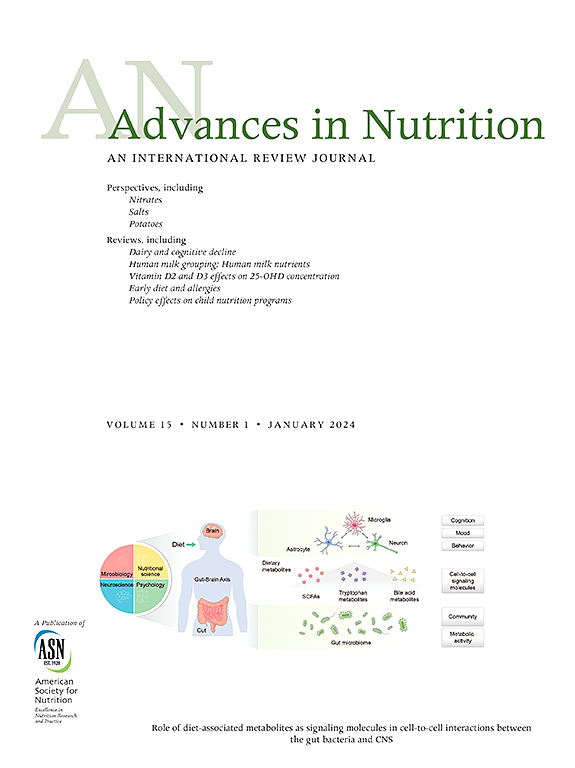Biomedical Applications and Nutritional Value of Specific Food-Derived Polysaccharide-Based Hydrogels
IF 8
1区 医学
Q1 NUTRITION & DIETETICS
引用次数: 0
Abstract
Food-derived polysaccharide-based hydrogels (FPBHs), which are composed of polysaccharides derived from food sources exhibit great potential for biomedical applications. The FPBHs possess a wide range of biological activities and can be utilized in the treatment of various clinical diseases. However, the majority of research efforts have predominantly focused on nonspecific polysaccharides derived from various sources (most plants, animals, and microorganisms), whereas the exploration of hydrogels originating from specific polysaccharides with distinct bioactivity extracted from natural food sources remains limited. In this review, a comprehensive search was conducted across 3 major databases (PubMed, Web of Science, and Medline) until October 24, 2024 to include 32 studies that employed FPBHs for biomedical applications. This review provides an overview of hydrogels based on specific food-derived polysaccharides by summarizing their types, sources, molecular weight, monosaccharide composition, and biological activities. The crosslinking strategies employed in the fabrication of FPBHs were demonstrated. The attributes and characteristics of FPBHs were delined, including their physical, chemical, and functional properties. Of particular note, the review highlights in vivo and in vitro studies exploring the biomedical applications of FPBHs and delve into the nutritional value of specific food-derived polysaccharides. The challenges encountered in basic research involving FPBHs were enumerated as well as limitation in their clinical practice. Finally, the potential market outlook for FPBHs in the future was also discussed.
特定食品衍生多糖水凝胶的生物医学应用和营养价值。
食物来源多糖水凝胶(FPBHs)由食物来源的多糖组成,具有巨大的生物医学应用潜力。FPBHs 具有广泛的生物活性,可用于治疗各种临床疾病。然而,大多数研究工作主要集中在从各种来源(大多数植物、动物和微生物)提取的非特异性多糖上,而对从天然食物来源中提取的具有独特生物活性的特异性多糖水凝胶的探索仍然有限。在本综述中,我们对三大数据库(PubMed、Web of Science 和 Medline)进行了全面检索,截至 2024 年 4 月 7 日,共纳入 32 项将 FPBHs 用于生物医学应用的研究。本综述概述了基于特定食物衍生多糖的水凝胶,总结了它们的类型、来源、分子量、单糖组成和生物活性。文中还展示了在制造 FPBHs 过程中采用的交联策略。此外,还阐述了 FPBH 的属性和特点,包括其物理、化学和功能特性。特别值得注意的是,综述重点介绍了探索 FPBHs 生物医学应用的体内和体外研究,并深入探讨了特定食品衍生多糖的营养价值。综述列举了涉及 FPBHs 的基础研究中遇到的挑战以及临床实践中的局限性。最后,还讨论了 FPBHs 未来的潜在市场前景。
本文章由计算机程序翻译,如有差异,请以英文原文为准。
求助全文
约1分钟内获得全文
求助全文
来源期刊

Advances in Nutrition
医学-营养学
CiteScore
17.40
自引率
2.20%
发文量
117
审稿时长
56 days
期刊介绍:
Advances in Nutrition (AN/Adv Nutr) publishes focused reviews on pivotal findings and recent research across all domains relevant to nutritional scientists and biomedical researchers. This encompasses nutrition-related research spanning biochemical, molecular, and genetic studies using experimental animal models, domestic animals, and human subjects. The journal also emphasizes clinical nutrition, epidemiology and public health, and nutrition education. Review articles concentrate on recent progress rather than broad historical developments.
In addition to review articles, AN includes Perspectives, Letters to the Editor, and supplements. Supplement proposals require pre-approval by the editor before submission. The journal features reports and position papers from the American Society for Nutrition, summaries of major government and foundation reports, and Nutrient Information briefs providing crucial details about dietary requirements, food sources, deficiencies, and other essential nutrient information. All submissions with scientific content undergo peer review by the Editors or their designees prior to acceptance for publication.
 求助内容:
求助内容: 应助结果提醒方式:
应助结果提醒方式:


